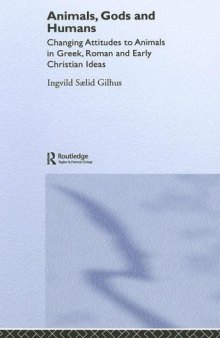 جزییات کتاب
جزییات کتاب
Ingvild Saelid Gilhus explores the transition from traditional Greek and Roman religion to Christianity in the Roman Empire and the effect of this change on the concept of animals, illustrating the main factors in the creation of a Christian conception of animals. One of the underlying assumptions of the book is that changes in the way animal motifs are used and the way human-animal relations are conceptualized serve as indicators of more general cultural shifts. Gilhus attests that in late antiquity, animals were used as symbols in a general redefinition of cultural values and assumptions. A wide range of key texts are consulted and range from philosophical treaties to novels and poems on metamorphoses; from biographies of holy persons such as Apollonius of Tyana and Antony, the Christian desert ascetic, to natural history; from the New Testament via Gnostic texts to the church fathers; from pagan and Christian criticism of animal sacrifice to the acts of the martyrs. Both the pagan and the Christian conception of animals remained rich and multilayered through the centuries and this book presents the dominant themes and developments in the conception of animals without losing that complexity.



 دانلود کتاب
دانلود کتاب

 جزییات کتاب
جزییات کتاب





 این کتاب رو مطالعه کردید؟ نظر شما چیست؟
این کتاب رو مطالعه کردید؟ نظر شما چیست؟
